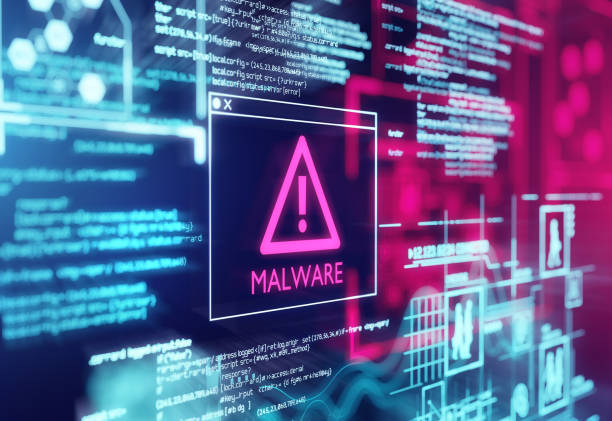
In an era where cyber threats evolve daily, relying on quarterly vulnerability scans is no longer sufficient. While traditional scanning methods may check a compliance box, they leave critical gaps in visibility and response. Continuous Vulnerability Management (CVM) offers a proactive approach—providing real-time insight into emerging risks, identifying misconfigurations, and enabling faster remediation before attackers exploit weaknesses. This article explores why continuous monitoring is essential for small and mid-sized businesses and how it helps close the gap between perceived and actual security.
Why Quarterly Vulnerability Scans Are No Longer Enough
Cyberattacks are no longer rare or random events—they are continuous, targeted, and increasingly automated. Yet, many small and mid-sized businesses (SMBs) still rely on quarterly vulnerability scans as their primary line of defense. This outdated approach creates critical blind spots, leaving organizations exposed to fast-moving threats that can go undetected for weeks or months.
In today’s landscape, where 43% of all cyberattacks target small businesses, relying on a security model that only checks for weaknesses every 90 days is no longer sustainable. Attackers are scanning your infrastructure daily—shouldn’t your defenses match that pace?
The Problem with Quarterly Scans
Most SMBs follow a familiar pattern: run a vulnerability scan every three months, review the report, patch a few critical items, and file it away for compliance purposes. While this may satisfy auditors, it fails to address the real nature of modern threats.
Here are three key limitations of this approach:
-
Attackers operate continuously, not quarterly. New vulnerabilities are discovered and exploited within days—not months. A scan from 60 days ago is already obsolete.
-
Severity scores alone don’t reflect business risk. A low or medium-severity issue on a key system may pose greater risk than a high-severity flaw on an isolated test machine.
-
Asset visibility is incomplete. Studies show that only 17% of organizations can confidently identify more than 95% of their connected devices. Unseen assets can’t be protected.
Real-World Impact: The Printer Breach
A 100-person professional services firm, confident in its quarterly scanning routine, faced a severe breach due to one overlooked device—a network printer.
The printer, exposed online and vulnerable to remote code execution (RCE), was discovered by an attacker via Shodan. Within 72 hours, the attacker pivoted from the printer to the company’s finance server, exfiltrated credentials, and accessed sensitive financial records. The breach was only discovered after a client received a fraudulent invoice.
Key oversights included:
-
The printer was not included in the quarterly scan scope.
-
A finance server had missed critical patches due to drift.
-
Firewall misconfigurations allowed lateral movement undetected.
A continuous vulnerability management approach would have flagged the unscanned device, alerted on patch drift, and detected suspicious activity well before the breach escalated.
What Effective Vulnerability Management Looks Like
Continuous vulnerability management provides near real-time visibility into emerging threats and misconfigurations. It goes beyond periodic reporting to offer actionable insights that evolve with your environment.
Key components include:
-
Daily or weekly incremental scans that detect new vulnerabilities without straining network performance.
-
Contextual prioritization based on asset exposure, business function, and exploitability—not just CVSS scores.
-
Automated asset discovery that identifies shadow IT, IoT devices, cloud assets, and forgotten endpoints.
-
Patch drift tracking that ensures systems remain updated over time—not just after a scan.
How SMBs Can Implement It Without Complexity
Continuous vulnerability management doesn’t require hiring a full-time security team. SMBs can adopt an automated, scalable, and cost-effective framework by combining smart tooling with external expertise.
Here’s a simplified framework:
-
Automate asset discovery
-
Use tools that automatically detect new or unmanaged devices across your network and cloud environments.
-
-
Adopt risk-based scanning
-
Focus on high-impact assets like public-facing systems, business-critical applications, and remote access services (e.g., RDP, SMB).
-
Run scans daily or weekly to match threat velocity.
-
-
Streamline remediation
-
Integrate findings into patch management systems.
-
Automate ticket creation and ensure patches are validated post-implementation.
-
-
Leverage managed services
-
Partner with a virtual CISO or managed security provider to review findings, prioritize remediation, and monitor for new CVEs.
-
-
Track security metrics
-
Use dashboards and automated reports to monitor vulnerability trends, patch completion rates, and at-risk systems over time.
-
The Business Case for Continuous Monitoring
SMBs lose an average of $25,000 per cyberattack, with more severe incidents costing over six figures. In the printer breach case, the organization incurred over $150,000 in forensics, legal fees, incident response, and customer notifications.
By contrast, continuous vulnerability management solutions typically cost just $3–8 per endpoint per month, with optional service packages for ongoing monitoring and reporting. The ROI is clear—preventing one major breach can fund years of protection.
Moving from Reactive to Proactive Security
Quarterly scans offer limited, outdated insights. Continuous vulnerability management transforms security from a point-in-time compliance task to a proactive, operational capability. Instead of reacting to incidents after they happen, you can identify and eliminate attack paths before they are exploited.
This shift is not just about better tools—it’s about better outcomes. Continuous monitoring enables:
-
Real-time visibility into emerging threats
-
Rapid response to new vulnerabilities
-
Long-term improvements in security posture
Conclusion: Security in Real Time
Cybercriminals don’t wait for your next scan—they’re probing your systems constantly. If your defenses aren’t keeping pace, you’re operating at a disadvantage.
Your business deserves more than occasional snapshots. It needs continuous insight, proactive protection, and adaptive risk management.
Because in cybersecurity, the difference between a secure business and a compromised one is often measured in hours—not quarters.
